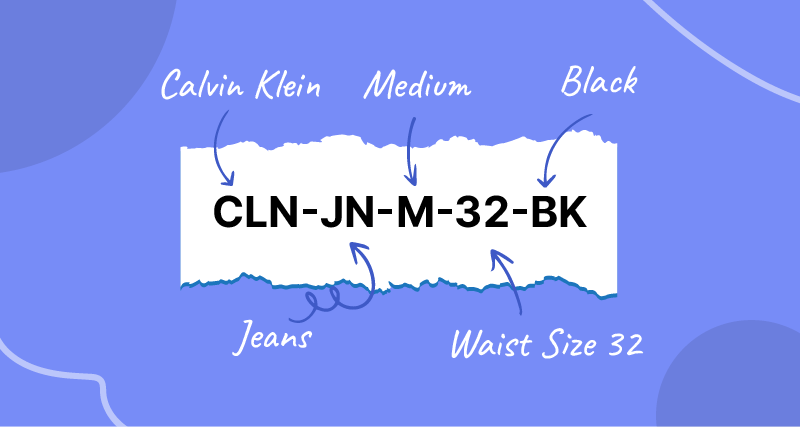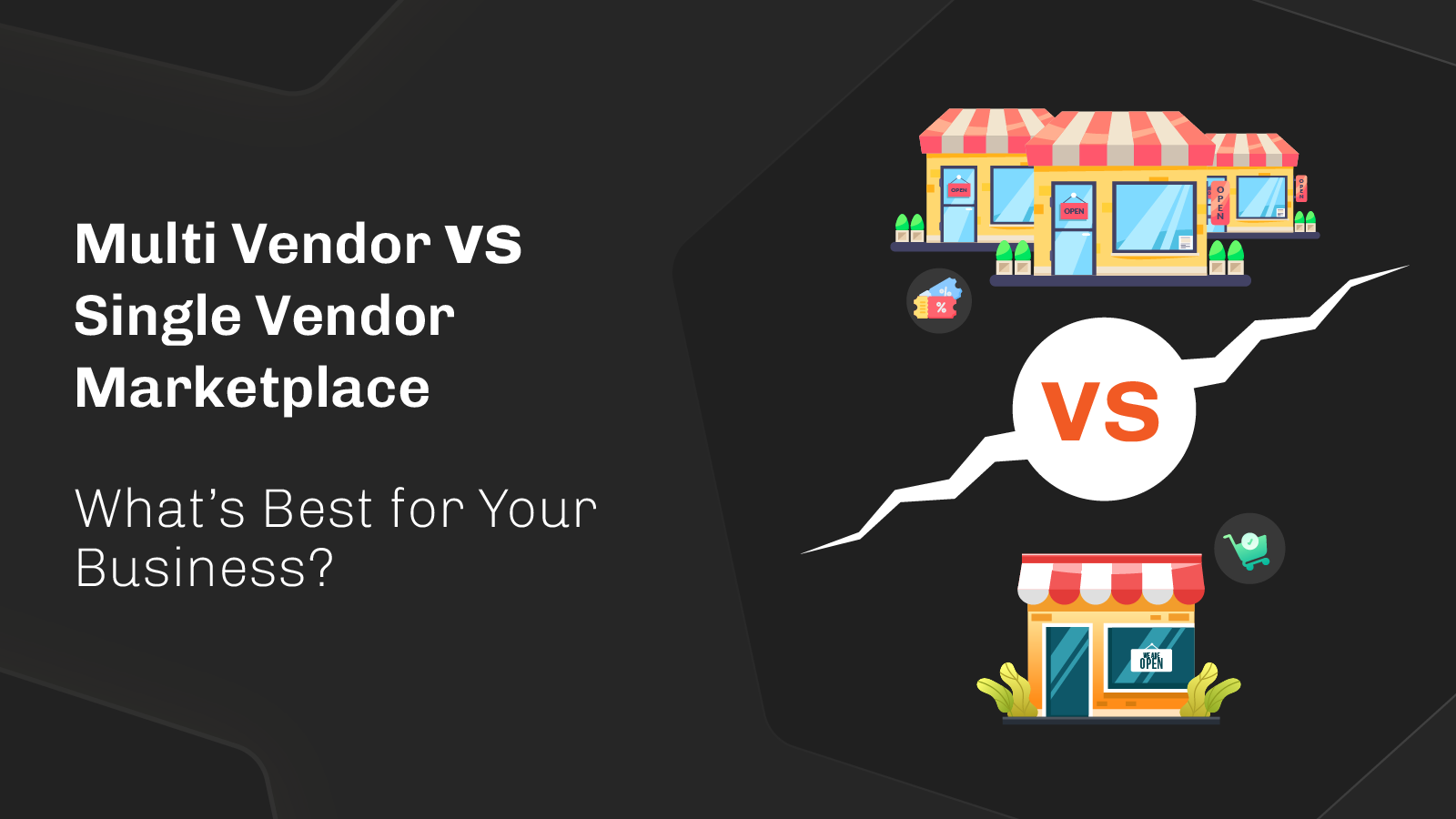Have you ever seen SKU (*pronounced Skew) on products? I bet you did! SKUs are everywhere. Recall the last time you bought a product from online. In the product description of that item, you must saw a SKU number.
What is SKU? Stock Keeping Unit is the full form of it. As the eCommerce market is growing at an ultra-sonic speed, businesses are increasing their inventory as much as possible. In such a scenario, SKU numbers are vital in managing products.
That’s only the concept of one of the most popular eCommerce jargon. In this blog, I’ll do a deep dive to explain SKU in the simplest terms possible. To learn more about it, stick with me till the end.
So, without any further due, let’s get started!
What is SKU?
Imagine you have a big store with lots of different products—clothes, toys, electronics, you name it. Tracking all these items can be a bit of a hassle, don’t you agree? Well, that’s where SKUs come in!
A Stock Keeping Unit is like a special ID or code for each product in the store. It’s unique to that item and helps everyone understand exactly what it is. Think of it as a fingerprint for products.
Let’s break it down even further–
S-> Stock: This means the items you have in your store.
K-> Keeping: Keeping track of those items.
U-> Unit: Each individual product.
Here are the components that SKU numbers typically include:
- Product Code or Number: This is a specific code or number assigned to the product. It’s like the product’s ID card.
- Brand Name: The name of the company or the brand that makes the product.
- Product Description: A brief description of what the product is, like “red t-shirt” or “wireless headphones”.
- Size: For items like clothes or shoes, this component tells you the size of the product, such as small, medium, large, etc.
- Color: This component specifies the color of the product, such as red, blue, black, etc.
- Price: The cost of the product, which helps both the store and the customer know how much it costs.
Location: This component tells the store where the product is located, which is especially useful for large stores or warehouses.

Whether you shop online or in a store, this SKU thing is super handy for everyone selling stuff. It’s like a secret language that keeps everything organized so you don’t end up with too much or too little of what you need. Cool, right? Now, let’s see what advantages it brings to eCommerce businesses in the next section.
Benefits of SKUs in eCommerce Business
Using SKUs in online shopping brings a bunch of really helpful benefits for both buyers and sellers. As a businessman, you must implement it in your eCommerce business. It makes product management easy, thus making the business run smoother.
Here are the advantages of SKUs in eCommerce Business:
- Easy Organization: For sellers, SKUs are like name tags for products. These numbers are unique and help organize items neatly, making it simpler to find things in a big store.
- Quick Shopping: When your customer wants to buy something, let’s say a pair of shoes, SKU numbers help them identify the exact shoes, among many others. So they can quickly click and buy without any confusion.
- No Mistakes: When customers buy online, SKUs ensure that they get the right color, size or version of a product. This reduces mistakes and makes sure they are happy with their purchase.
- Faster Checkouts: At the checkout, SKUs speed up the process. The cashier or the online system scans the SKU, ensuring customers are charged correctly and their items are bagged accurately.
- Smart Inventory: For sellers, SKUs help to keep track of how many items are left in stock. When an item is sold, the SKU helps update the inventory, making sure they know when to restock.
- Happy Customers: Because SKUs ensure customers get exactly what they want, they’re happier with their purchases. And when customers are happy, your business is happy too!
In a nutshell, SKUs are like the superheroes of online shopping. They ensure everything runs smoothly, making the user’s shopping experience enjoyable and hassle-free!
Also Read: Multi Vendor Marketplace vs. Single Vendor Marketplace
Tips to Create SKU Numbers
Imagine you have a store selling different things like toys, clothes and books. Each specific type, size and color of an item you sell can be considered a different “product variation”. For example, a red toy car and a blue toy car are different variations of the same product, which is a toy car.
Now, you can’t use the same SKU for different car colors. Otherwise, customers as well as you will be confused. So, you must create SKU numbers that are meaningful.
Here are the tips for creating proper SKUs:
- Keep It Simple: Use short and easy-to-remember codes. Complicated codes can lead to confusion.
- Be Descriptive: Include important details like color, size or type of the product in the SKU. This helps you quickly identify what the product is.
- Stay Organized: Create a consistent system. For example, if you sell clothes, you might start with the type of clothing (like “T” for T-shirts), then color (like “BL” for blue) and size (like “M” for medium).
- Avoid Special Characters: Stick to regular letters and numbers. Avoid using symbols because they might cause issues in computer systems.
- Be Unique: Every product variation should have its own unique SKU. This ensures you can differentiate between different items easily.
- Use Software: If you have many products, consider using inventory management software. These tools can help generate and track SKUs efficiently.
- Think Long-Term: Plan your SKU system considering future products. Make it flexible so that you can add new items without having to overhaul your entire system.
In Hexacom, a multi branch supported single vendor eCommerce system developed by 6amTech, you can get machine-generated SKUs in just 1-click. These SKUs are developed following the best practices in the market. As a result, you can get unique codes every time you generate them.
Remember, the goal is to make your SKUs clear and easy to understand for you, your team and your customers. This method helps you to keep track of your products and manage your business effectively!
SKU vs Other Product Identifiers
Stock Keeping Unit isn’t the only product identifier in the market. There are some other identifiers available, such as UPC, ISBN, EAN, etc.
Here is the comparison among SKU and other product identifiers:
SKU (Stock Keeping Unit)
- A SKU is like a unique nickname for each of your products.
- It helps you keep track of your inventory.
- SKUs are specific to your store and can be customized based on your needs.
- For example, if you sell T-shirts, your SKU for a medium-sized blue T-shirt could be “BLU-M-TSHIRT”.
UPC (Universal Product Code)
- A UPC is a standardized barcode used for retail products in North America.
- It’s a series of numbers under a barcode.
- UPCs are universal and identical for the same product, no matter where it’s sold.
- UPCs are necessary if you plan to sell your products in major retail stores.
ISBN (International Standard Book Number)
- ISBN is the unique identifier for books.
- It’s used by publishers, booksellers and libraries to identify a specific book title.
- ISBNs are crucial for books to be sold through bookstores and online retailers.
EAN (European Article Number)
- EAN is similar to UPC but is used outside of North America, especially in Europe.
- It’s also a series of numbers under a barcode.
- EANs, like UPCs, are used for various retail products and are unique for the same product worldwide.
In summary, SKUs are internal codes specific to your store, helping you manage your inventory. UPC and EAN are universal barcodes used for retail products, with UPC being common in North America and EAN being used globally. ISBN is a unique identifier specifically for books. Each serves a different purpose in the world of retail and product management.
Conclusion
Customizing the product codes, known as SKUs, can greatly benefit online stores. It helps them keep their products well-organized, making it simpler for shoppers to find what they want. This also helps in tracking sales and items more efficiently. However, if you have a custom-made online store, you might need a developer to assist you with this.
Thanks for reading this blog. If you find this blog helpful, feel free to share it with others. That’s all for today. Talk to you in the next one.
Peace!
















